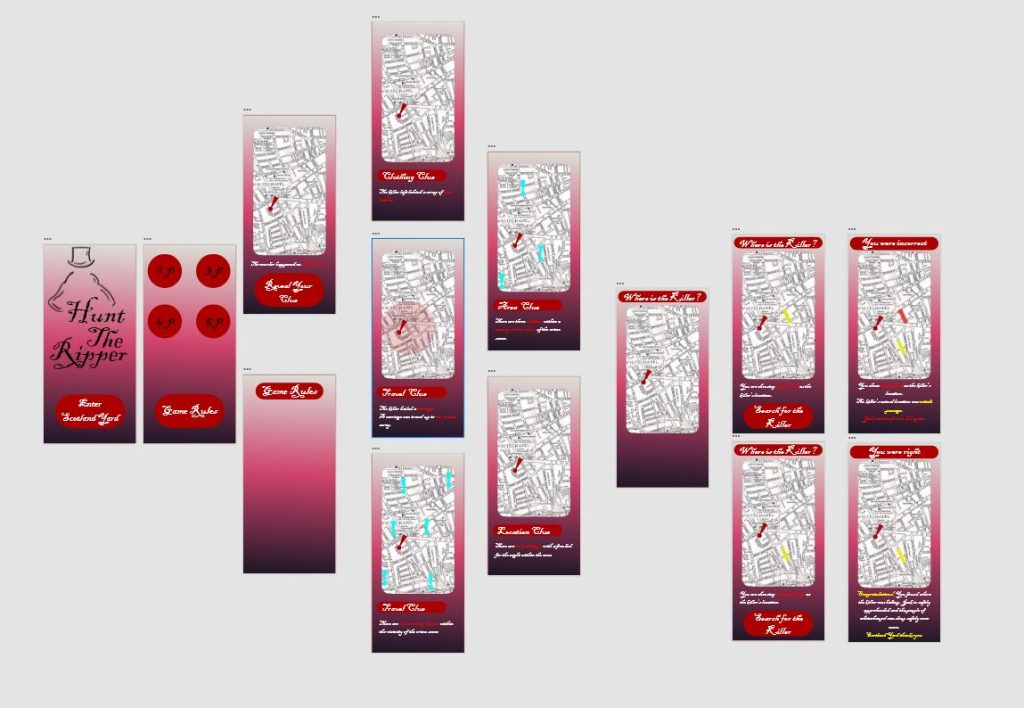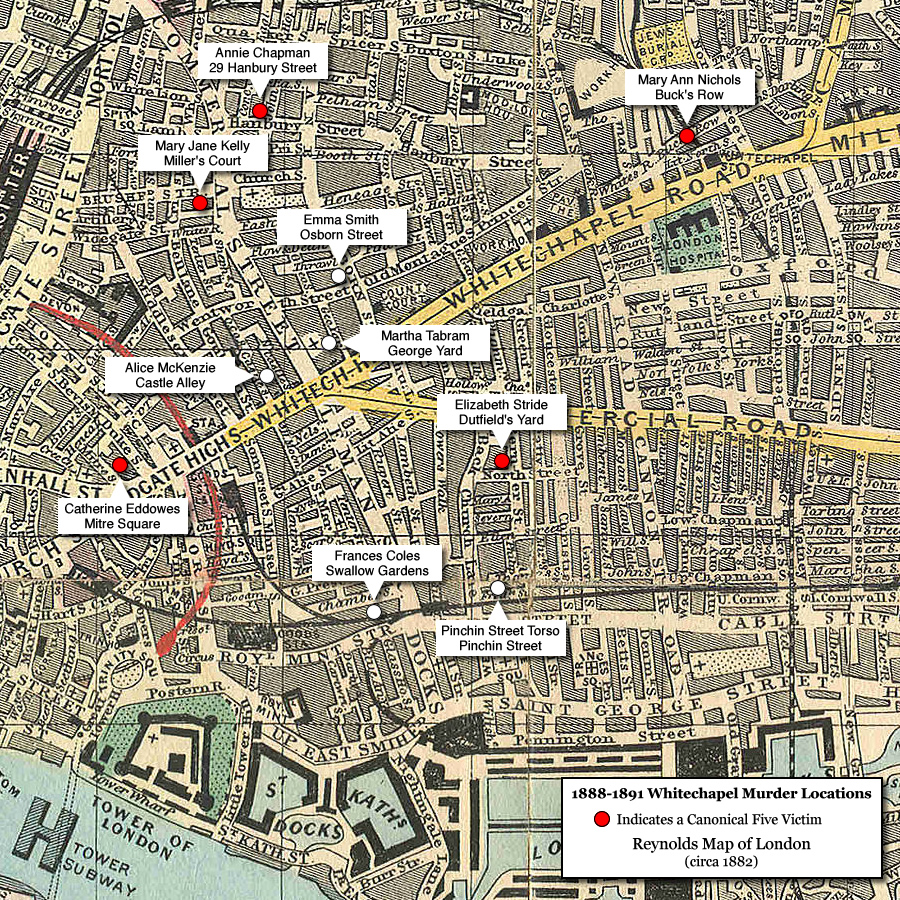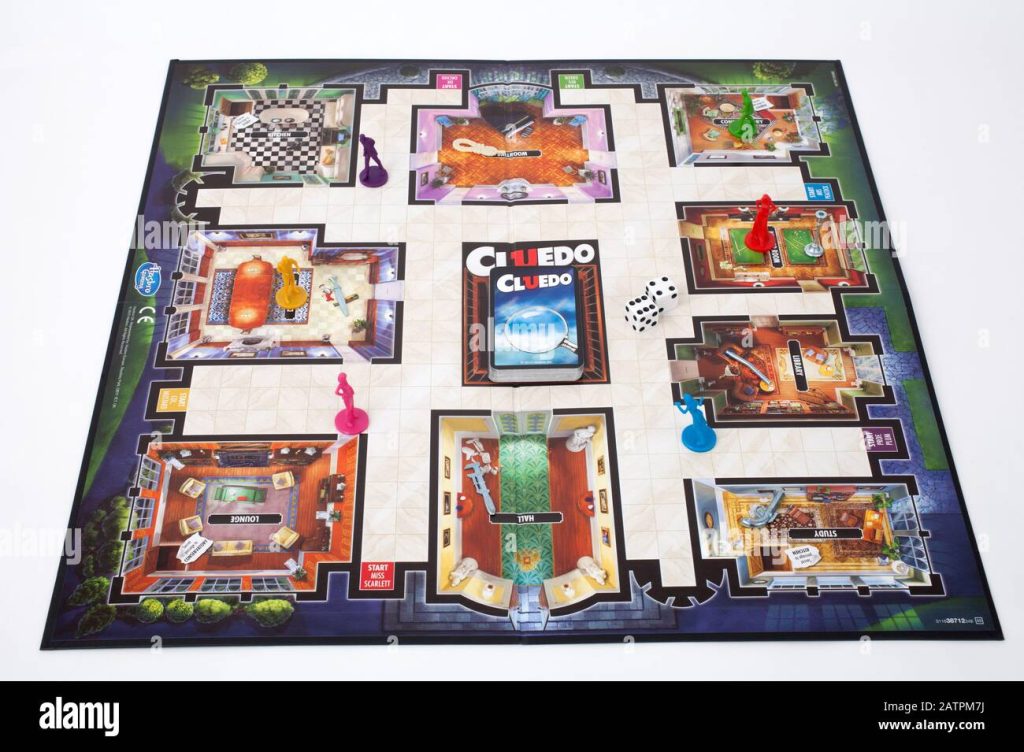‘This weeks theme (and your sixth theme of seven) is T E A M W O R K‘
-Stuart Lilford
:: Research ::
This weeks theme was a difficult one for me, It took me a long time to think of an idea I could develop enough for it to be called a prototype. Plus it was hard to think of an idea I could develop in Adobe XD as I am not confident in my abilities with game engines such as Unity or Unreal however I felt the theme naturally lent itself far more to a game than a useful app.
During the class examples they touched on a board game set in Victorian England. Now, I am a bit of a history buff and that particular time setting is very much one of my favourites. So I knew I wanted to use Jack the Ripper as the theme for whatever I made.
:: Idea Development ::
In my free time I enjoy writing and one of the stories I have written touched on the Jack killings so I already had a very useful map which shows the location of the killings in Whitechapel. Particularly useful as It shows not just the canonical five but other copycat killings too (Ref.1). This got me thinking of a making something like a cluedo game (Ref.2) but instead of being competitive the players are working together to solve a mystery.
I was stuck on the logistics of making a Cluedo game prototype for a good while. Eventually I went back through my other prototypes I have produced in this module and revisited the broken narrative Idea I had in my ‘Fragments’ idea. While I didn’t use the idea for that I felt like this could be adapted to this idea, so instead of cards the players are given various clues and have to communicate with each other to find Jack.
:: Production ::
I still wasn’t sure what kind of material I had to produce for the prototype so I approached it as I have the previous weeks examples. I made the cover page as well the page where the host player selects the player count (Fig.1) I did also create a pathway to a game rules page which I would likely have to develop if I were to take this prototype as one of my three, however as I would be explaining how the game worked in the video I didn’t see any need to add this text in at this stage.
Next I started making the various clue cards, each of which would be sent to one of the players in the game (Fig.2). for this I found a blank map of Whitechapel which I could use as a visual stand in for the interactive map the prototype would need to be further developed (Ref.3) This Is the part I wouldn’t know how to implement in a game engine, where one player is the host and others join to be shown there own clues.

Fig.1 
Fig.2 
Ref.3 – Larken89 (n.d.) 
Fig.4
Lastly I implemented the final selection process (Fig.4). Where the players after having communicated, make there choice of the street the killer is located on. There are naturally two paths, one where the players are successful and are congratulated and one where they are not. You can also see the various slides I ended with here, with the middle group being the part that I would struggle to implement into a game engine.
:: Video ::
:: Feedback ::
– My Thoughts –
I feel like there is a promising idea here but I would need more time to come up with how to make the game more fleshed out for market, and would greatly benefit from consulting other game students on how to make a compelling game from this idea. I like the styling I did on the slides, and If I were to take that further the red dots would be wax seals to tie in further with the Victorian setting.
– Chris’s Comments –
– Stuart’s Comments –
:: References ::
Larken89 (n.d.). [Online Image]. Stalking-jack-the-ripper.fandom.com [Host Website]. Available online: https://stalking-jack-the-ripper.fandom.com/wiki/Whitechapel [Accessed 21/04/2022]
Molyneux, B (2020). [Online Image]. Alarmy.com [Host Website]. Available online: https://www.alamy.com/the-board-game-cluedo-image342247574.html?pv=1&stamp=2&imageid=8562CF40-25E0-4C68-A08C-A0B9C4D86B5F&p=17722&n=0&orientation=0&pn=1&searchtype=0&IsFromSearch=1&srch=foo%3dbar%26st%3d0%26pn%3d1%26ps%3d100%26sortby%3d2%26resultview%3dsortbyPopular%26npgs%3d0%26qt%3dcluedo%26qt_raw%3dcluedo%26lic%3d3%26mr%3d0%26pr%3d0%26ot%3d0%26creative%3d%26ag%3d0%26hc%3d0%26pc%3d%26blackwhite%3d%26cutout%3d%26tbar%3d1%26et%3d0x000000000000000000000%26vp%3d0%26loc%3d0%26imgt%3d0%26dtfr%3d%26dtto%3d%26size%3d0xFF%26archive%3d1%26groupid%3d%26pseudoid%3d%26a%3d%26cdid%3d%26cdsrt%3d%26name%3d%26qn%3d%26apalib%3d%26apalic%3d%26lightbox%3d%26gname%3d%26gtype%3d%26xstx%3d0%26simid%3d%26saveQry%3d%26editorial%3d1%26nu%3d%26t%3d%26edoptin%3d%26customgeoip%3d%26cap%3d1%26cbstore%3d1%26vd%3d0%26lb%3d%26fi%3d2%26edrf%3d%26ispremium%3d1%26flip%3d0%26pl%3d (Accessed 21/04/2022)
Reynolds Map of London circa. (1882). [Online image]. Whitechapeljack.com [Host Website]. Available online: https://whitechapeljack.com/the-whitechapel-murders/ (Accessed 21/04/2022)

